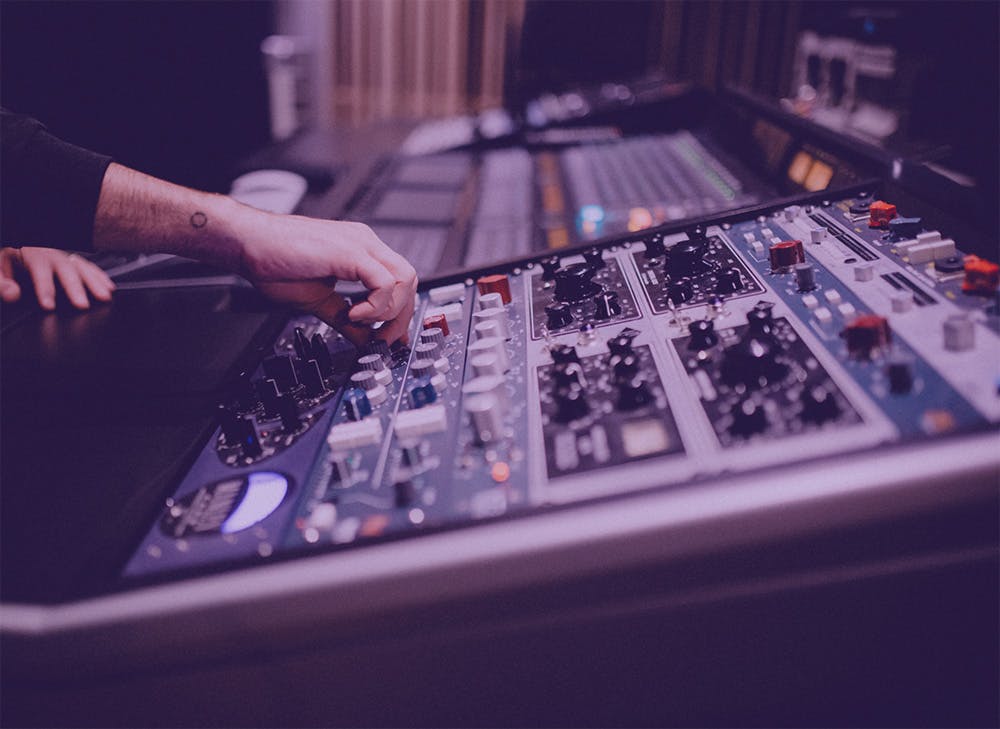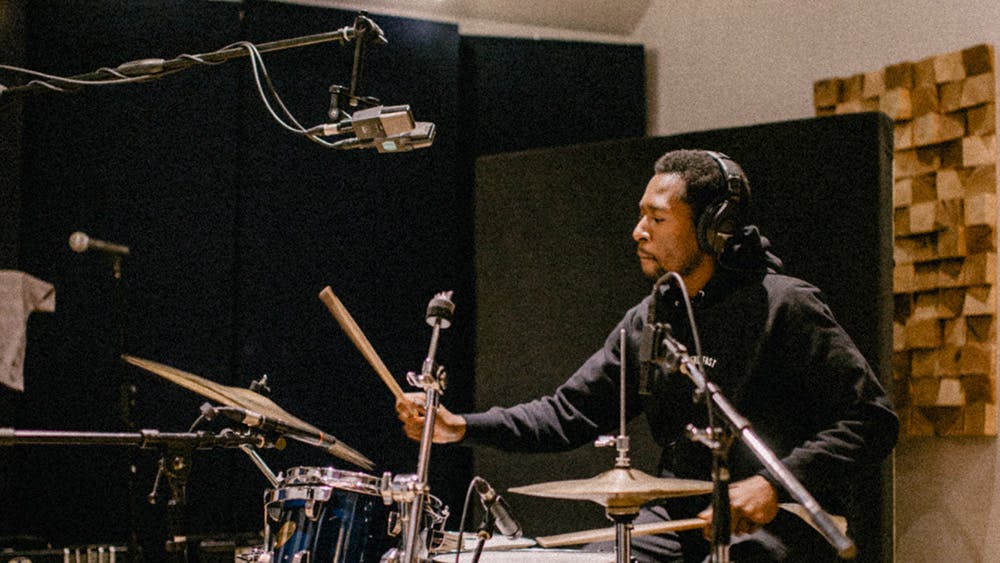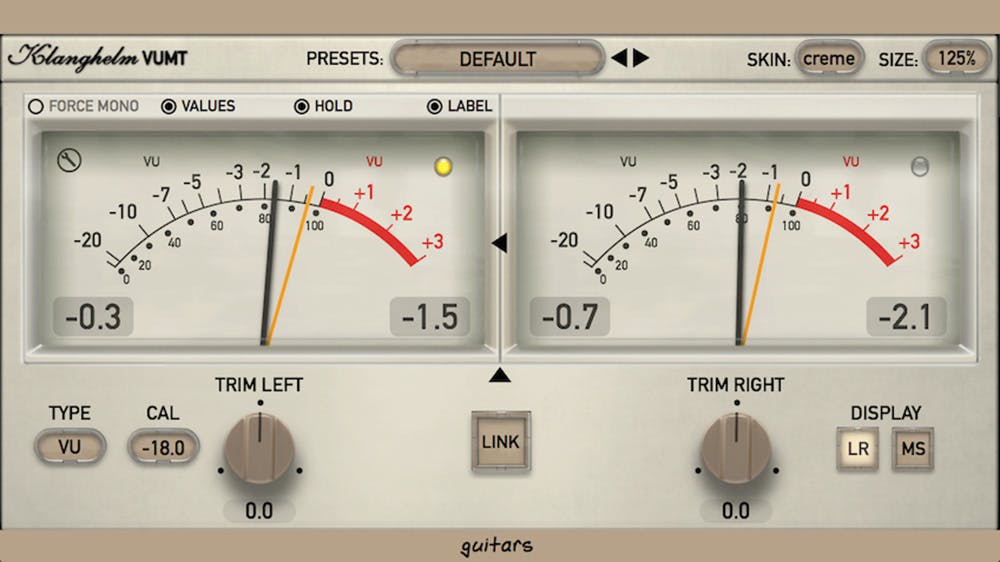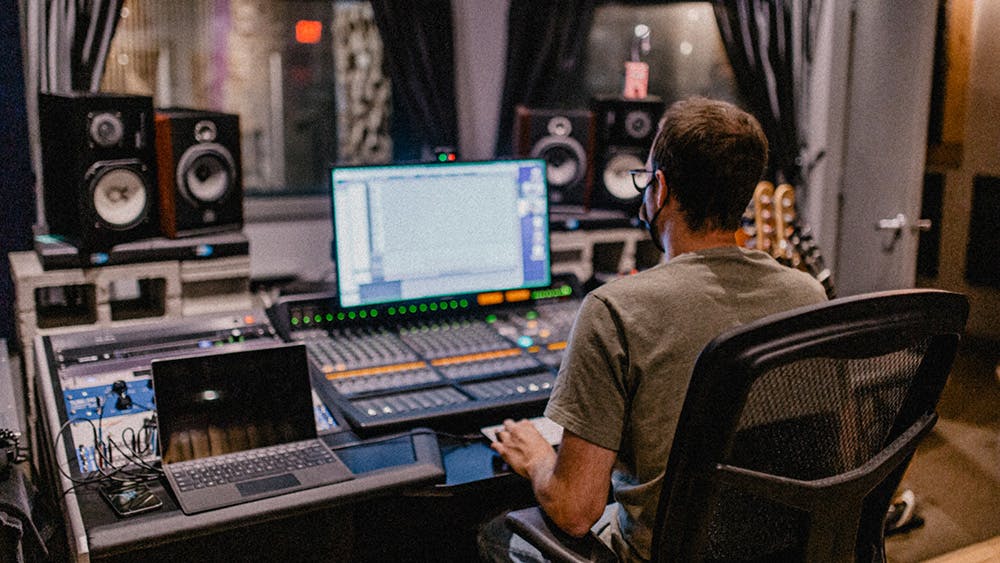5 Tips to Make Your Bass Drum Sound Good
Reading time: 8-10 minutes
Hey guys! It's Brad Simons here, and this post is all about making your kick drum sound good. There are few things more satisfying in the studio than getting that kick sound just right. As always, I'm going to talk about how I go about it, rather than describing all possible ways that it's done. We're going to talk about the process from tracking, all the way to mixing, so we can make sure the final mix has that much-needed kick drum sound. Here we go!
1) Get It Right In The Room
This is a cardinal rule in the studio. How many times have you heard someone say, "you can't polish a turd"? It's true, you can't. No matter what you do, if you don't get the sound right in the room, you're not going to get it right in the mix. Don't take shortcuts.
Now in terms of the kick drum, what exactly does that mean?
Well to start, you need to find the right spot in the room for the kit. This is often done with a tom, as they resonate and reveal more about the room than the kick and snare do. So grab a tom, and walk around the room while hitting it. See how it responds to each area of the room. Look for something that resonates, but is not muddy.
Secondly, work on the tuning of the drum. What a difference a great tuning can make to the sound of any drums. You should have a good idea of the pitch you want it to be at and how resonant you want it to sound. Now, I'm not going to talk about drum tuning techniques in this post, but it will definitely worth either hiring a professional or at least educating yourself with a few YouTube videos. Alternatively, you can use get yourself a Tune-Bot Drum Tuner to get the tuning you're looking for. This thing even has a chart with preset tuning frequencies based on size of drums and sound you're looking for. Definitely worth looking into.
Third, try different kick drums, beaters, and heads. Now some of that is easier said than done, not all of us have 5 different kick drum options laying around. Fair enough! But the least you could do is try out a few different kick drum heads, and a few different beaters. If you want a lot of attack, look for a hard beater than adds some of the click sound to the drum. If you're going for more of a soft pillow-y sound, then grab a felt beater to minimize the attack.
Either way, you need to get the drum sounding the way you want it before you even put a mic up to it.
2) Choose The Right Mics
This can be pretty subjective, I'm not going to lie. But there are a set of standard practices that can get you to that great kick drum sound. Here are a few options that I like to go with:
Inside Mic
I typically aim for attack with this mic. I want to get the hard transient here, not necessarily as concerned with the subby thump frequencies. Typically, I'll use an Audix D6, AKG D112, Sennheiser MD421, or even just a Shure SM57 As expected, you're going to get more "slap" of the front batter head when you move the mic further inside. If you need a lot of attack, for say rock or metal, this is essential to get it to cut through your mix. If you want a bit more tone off the inside mic, don't put it quite as far in. It's a good idea to have some scratch tracks cue'd up in your session, then see how it fits in the mix. Play with moving the mic forward and back until its working.
Outside Mic
This is where I get my bottom end information from. I typically place the mic a close as I can to the kick drum, without it touching the head. Give yourself a couple inches of room, as the outer head will move slightly when played. Some guys will put this at the sound hole of the kick, I prefer it directly over the rest of the drum head.
Some go to mics for me include an AKG D112, Rode K2, Neumann U87 (padded down), or a Neumann m147. It seems tube condensers get a cool thump to the sound. Blends well with what we have on the inside.
Front Mic
Let me explain exactly what I mean for front mic. I don't mean putting a mic on the beater side of the kick drum, I mean a microphone in front of the whole kit at kick drum height. Let's call it, the "audience" side of the drum kit. But if you want a bit of space and air to the sound, you should try adding another mic that's about 1-2 feet in front of the kick drum. Try using a microphone that you would typically use for room mics. We might use the Neumann U87, AKG C12, Neumann U87, or even a Shure SM7B. You'll have to check the phase on this mic, as there is a potential for alot of issues. Experiment with moving it forward and backward while flipping the phase until the bottom end is right. You'll also have to check this again once the rest of the room mics and the overheads are up and running.
Other Mics
I want to quickly note that there are also other mics at play here, but for the sake of brevity, I'm going to leave them out of this post. Room mics can capture the kick drum, but that's another post altogether. Also, sometimes engineers will put a dynamic or a pencil condenser on the beater side of the kick drum for more attack, but in my experience and opinion, it sounds pretty bad. Maybe I haven't figured out how to do it properly yet. Who knows! So we're going to leave it at that.
3) Get The EQ Right
I don't have an extravagant method for kick drum EQ, but I think what I'm doing works? My first step is to cut mids. Depending on the genre, I will typically cut anywhere from 10 to 15 dB from 300-700 Hz. There are a couple ways to get this right. You can start by boosting 15 dB, and sweep that frequency range to find the nasty frequencies, then cut them. Or you can start with a cut and just sweep until it feels right. Honestly, I'm just looking for the tone here. So I usually cut first, then sweep until it "sounds right".
If I want more thump, I'm going to go in and use a bell EQ to boost somewhere around 65 Hz. However, this is a fast way to make your kick subby and muddy in your mix. So I counter that by also engaging a hi-pass filter, and I then use that to decide how much low end I need. It may seem counter-intuitive, but sometimes my kick drum will have an 8 dB boost at 65 Hz, and then it will be hi-passed at about 80 Hz. I know what you're thinking, that doesn't make any sense. But I'm serious, try it out!
I do basically the same thing on the top end, just in reverse. So I'll usually have to do a bit more sweeping to find the frequency I like. If it's a really dense and loud mix, say a metal band, the frequency usually ends up higher. For a softer sound, it'll end up lower. So I may boost anywhere from 2 kHz up to 9 or 10 kHz. That's a decision you'll have to make per track. I then use the lo-pass filter to get rid of any nasty highs and make room for things like cymbals. Usually hit this around 9 or 10 kHz.
I don't really have a set method for where to apply kick drum EQ. I usually have the two tracks above I mentioned (kick in and kick out), and then I bus them together into an aux in Pro Tools. Sometimes I will apply this EQ to each track, sometimes to just the bus, but most of the time, a combination of both. It simply takes experimenting until it's sitting in the mix properly.
4) Work It With Compression
I like this stage, as this is where the kick drum starts to come alive. A kick drum is a very dynamic instrument, so depending on the context, sometimes alot of compression is needed to get every hit to be heard. This also depends on the consistency of the drummer, as well as the genre.
So for instance, a folk record probably doesn't need a whole lot of compression, as the kick is not as prominent in this genre. You actually want it to breathe a little and have more movement. So if it's needed, I try to stay within the 2 - 4 dB of gain reduction. Try a slower attack and release and a lower ratio to keep it nice and gentle. I will sometimes use the UAD LA2A Silver plugin for this, adjusting the emphasis knob to sidechain out some of the low frequencies.
Alternatively, if it's a dense mix, I'm typically hitting that thing much harder. If I'm mixing a rock or metal record, my go-to is the blue stripe UAD 1176 Rev E, as it's punchy and fast. I still keep the attack time slow to let the transient breathe, but I make the release time quick. Gives it a bit of pump. As for gain reduction, anywhere from 5-10 dB is fine. However, you'll want to make sure that you're not increasing the bleed from other mics too much, as this can end up causing phase issues in your entire drum sound. So be careful of that.
You can also try using parallel compression to keep the original uncompressed sound and supplement it with a punchy and dynamically consistent copy. I usually have my kick bus duplicated for a parallel comp. For some reason, I like the UAD 1176 AE plugin for this one, slow attack, quick release, and gain reduction of about 7-9 dB. Start the fader around -10 dB and move up to taste. Don't overdo it!
5) Give It Space In Your Mix
This is an absolutely crucial step to getting your kick to sound right. No matter how great your kick sounds on its own, if it's not sitting in the mix properly, it's never going to sound as good as it should. Plain and simple. Now let's be clear, this is a fundamental principle of mixing, this doesn't just apply to the kick drum. Mixing is a relationship, not an individual effort.
So how do we achieve that with the kick? Well, there are a few things you can do. First off, whip out that hi-pass filter and apply it to everything in your session except the kick! Ok, it's not a hard fast rule, there are other things that you want to have some low end. But for the most part, you gotta make room. I typically hi-pass guitars anywhere from 100 Hz, sometimes up to even 250 Hz. Vocals usually start around 150 Hz up, keys 120 Hz and up, etc. Clear out that low end for the kick. Sometimes, mixers will hi-pass the kick drum up higher and let the bass guitar or bass synth sit way down low. That's an approach, but I prefer to let my kick own the low sub frequencies.
Second, get your stereo image right. Try to get your guitars, keys, synths, shakers, as many things as you can off to the sides. This can clear up room in the centre to allow the attack and thump of the kick to come through without fighting for it. Now I will say, it's probably still a good idea to check your mix in mono, and use EQ to carve out some space for the kick. I would argue that the majority of listeners are doing so in stereo, but places such as Instagram, convert audio to mono. Also, most phone speakers are mono, so you'll have to account for that as well.
Well, that's it for now! That's how to make a kick drum sound good :) Feel free to comment below and provide any other tips you have for making the kick drum sound huge. And follow us on social and sign up for our mailing list to get more updates from Velveteen!
Cheers!






